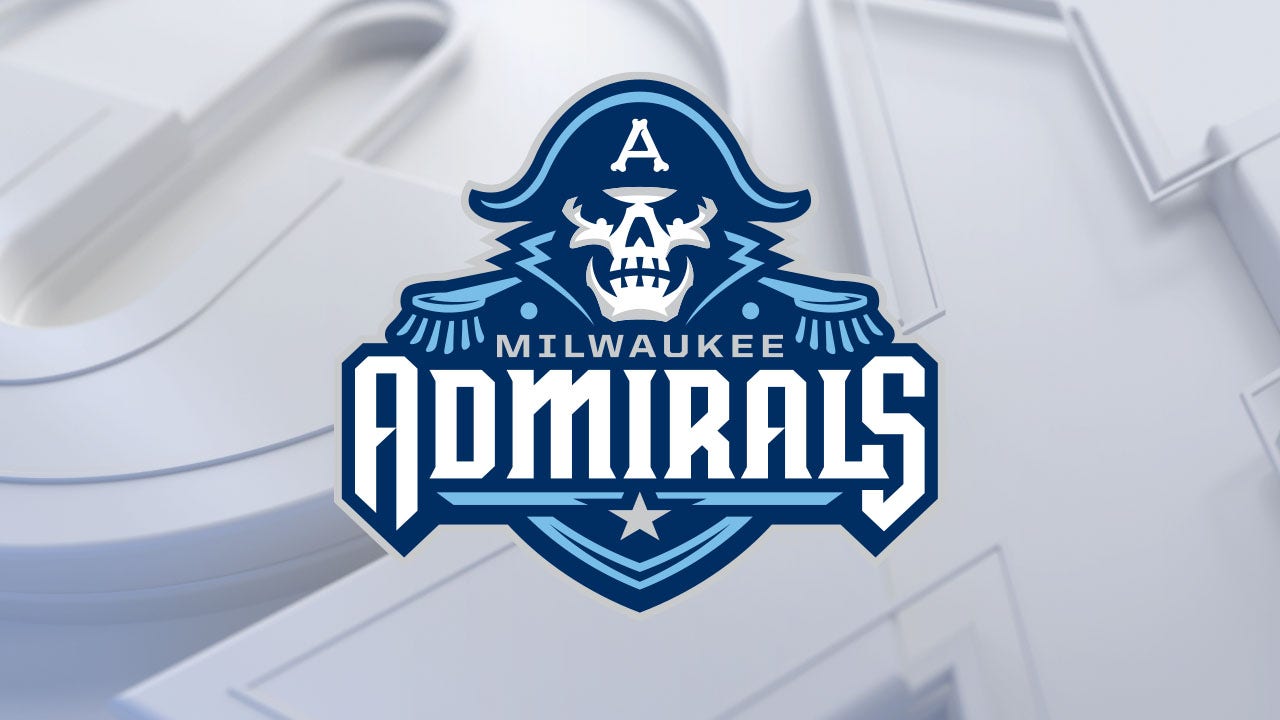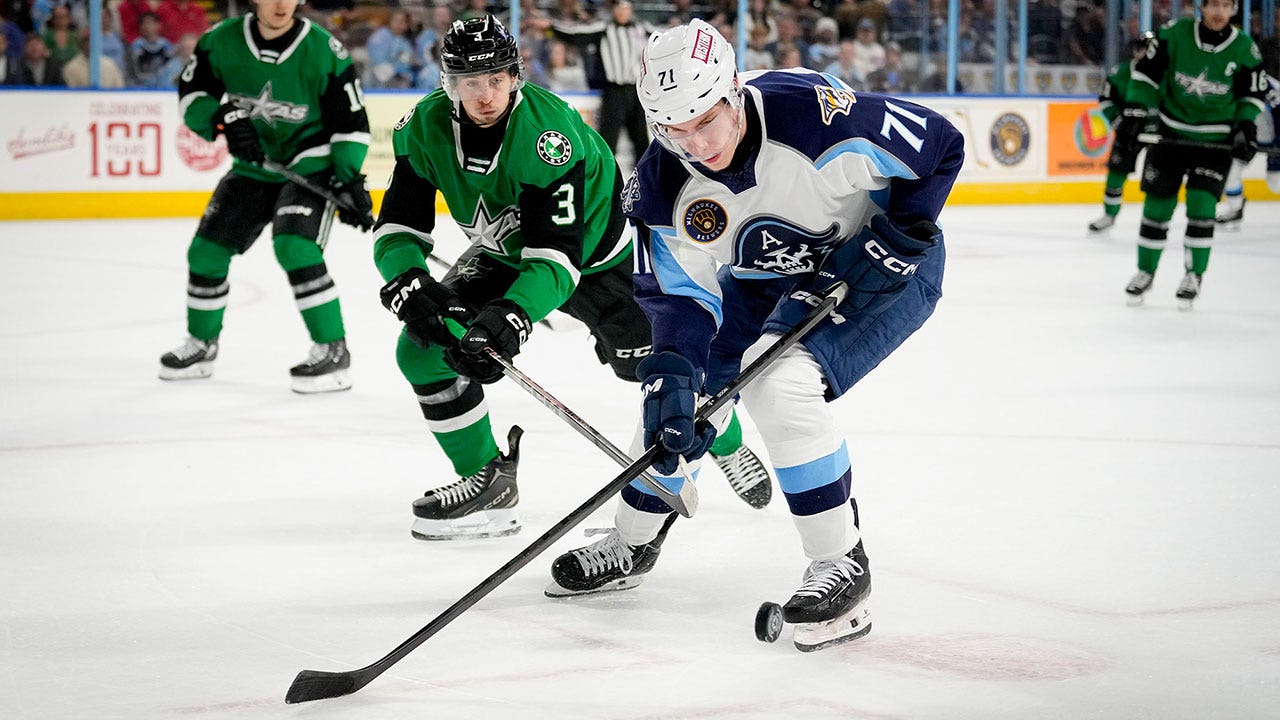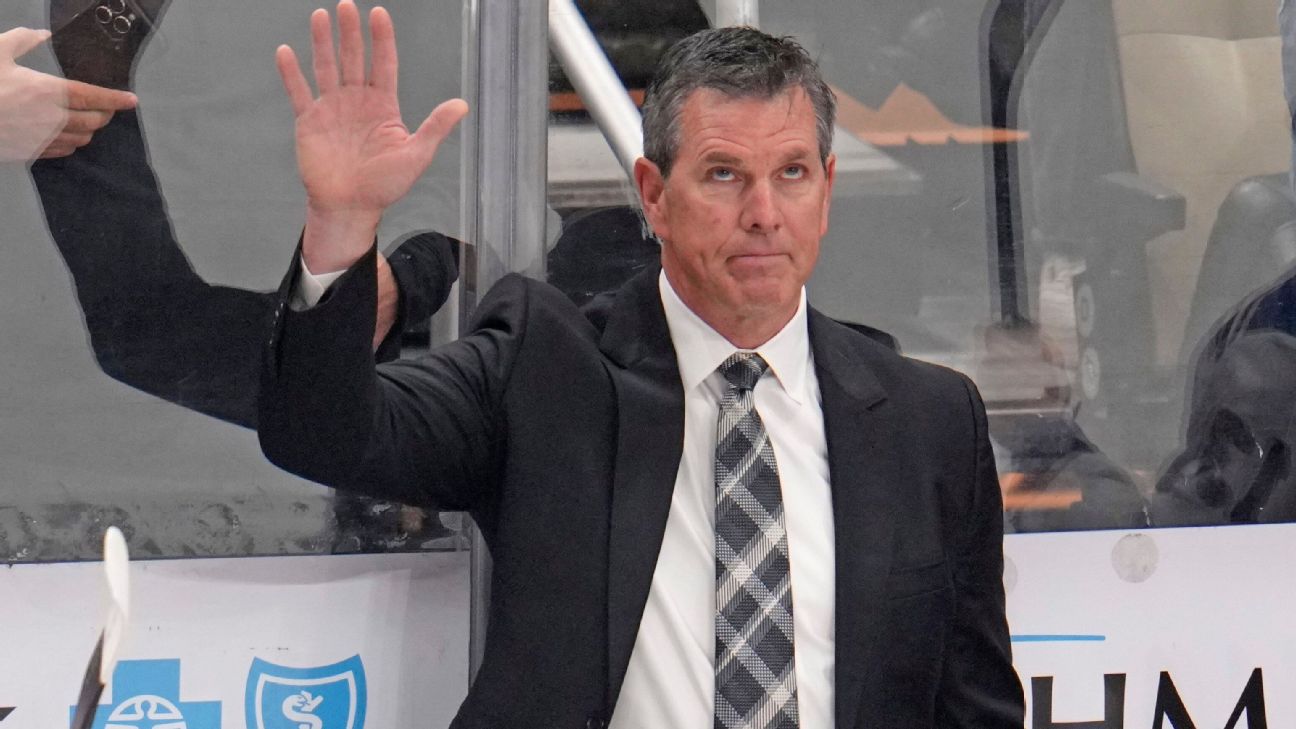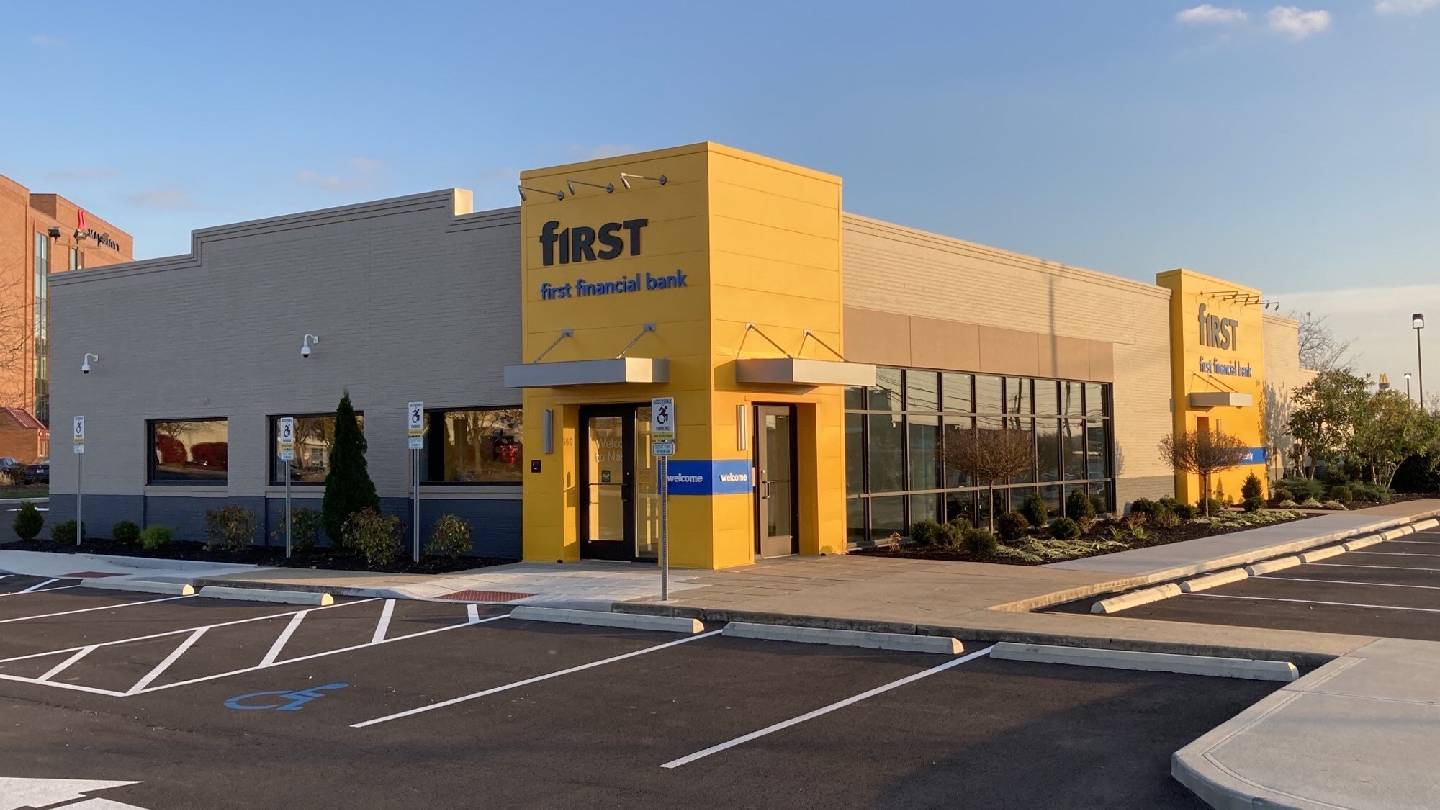Sports
The art of hitting in women’s hockey: How are PWHL players adapting to a more physical game?

The Professional Women’s Hockey League, hoping to educate players on the art of taking a hit, brought in a big name.
Ex-NHL player Ryan Getzlaf was one of his generation’s best combinations of skill and physicality. He was an elite playmaking center — who won a Stanley Cup and two Olympic gold medals — and a punishing 6-foot-3, 220-pound presence.
The former Anaheim Ducks captain now works in the NHL’s department of player safety, which hands out suspensions or fines for on-ice incidents in the league. It was in that capacity that he spoke to PWHL players during the league’s November preseason camps.
Since the launch of the PWHL in January, women’s hockey has become more physical than ever before. And while the increased contact has largely been celebrated — by both players and fans — there have been some concerns about injuries and ambiguity about how to interpret the PWHL’s rulebook. Getzlaf’s goal was to teach players how to better protect themselves on the ice.
“Through no fault of their own, a lot of them never played contact hockey before, so they’re learning a whole new set of rules and a whole new style of play,” Getzlaf told The Athletic. “(The league) saw the benefit for me to go in and talk about spacing on the ice, how to use your body properly along the boards (when) defending against contact, as opposed to putting yourself in some tough spots.”
Over 1,157 NHL games, Ryan Getzlaf was no stranger to making and taking hits. (Bruce Bennett / Getty Images)
Women’s hockey has been played the same way for decades. But now athletes are having to adjust to a new style of play once they hit the professional ranks. Navigating that change is going to take time for many players, league officials and executives.
“It’s unprecedented to have your first professional game be the first time you’re allowed to be physical,” said Toronto Sceptres coach Troy Ryan. “You’re going from 0 to 100.”
Physicality has been a hot topic in women’s hockey for years, especially among players.
In April 2023, The Athletic conducted an anonymous poll in which the majority of players said that if they could change one rule in women’s hockey, it would be to allow more contact.
According to the International Ice Hockey Federation rulebook, “bodychecking” in women’s hockey is allowed when there is a clear intent to play the puck. What that typically meant in practice, however, was players being penalized for making contact. That has made women’s hockey conspicuously different from the NHL, where hitting — and fighting — is very much a part of the game.
Women’s hockey players have long believed they should be able to get away with more contact, particularly at the net front and along the boards — not so much in open ice, where hits get more dangerous.
Before the PWHL launched, league leaders were deciding what PWHL games should look like; making the games more physical was an easy change.
“The players want this,” said Jayna Hefford, the PWHL’s senior vice president of hockey operations, who played 17 years for the Canadian women’s national team. “We think it’s a great brand of hockey. (The players) are strong, they’re fast, they can play this way.”
The PWHL’s initial rules around bodychecking were written similar to the IIHF’s — where gaining possession of the puck was a requirement to make contact — but it was clear early on that the interpretation of the rules and the way games were officiated was going to be different. There were more hits on the boards, and more contact was allowed in puck battles.
There were injuries last season, but according to Hefford, the number of injuries did not hit an alarming level. If at any point the increased physicality was creating more injuries, the league’s chief medical officer, Tina Atkinson, was instructed to flag her concerns with hockey operations. Over a number of check-ins, Hefford said that was never the case.
But there was inconsistency in how games were called last season. And for many players, the increase in contact was a first in their career.
Some players grew up playing boys hockey, where bodychecking is introduced at the under-14 level. Those players would have learned how to absorb contact, or how to throw a good hit — albeit years ago, especially for veteran players. Bodychecking has never been permitted in youth girls hockey, which means those skills are not typically taught.
“We’re figuring it out as players,” said Toronto defender Renata Fast. “There’s going to be bad hits because players are learning how to play physically. Not only are you learning how to take a hit, you’re learning how to give it and there’s going to be instances of doing it at the wrong time.
“I think for our league it’s been a work in progress.”

Defenders like the Sceptres’ Renata Fast can now add physicality to their arsenal, but it’s a learning process. (Troy Parla / Getty Images)
That work has taken on a few different forms.
Before the start of the 2024-25 season, the PWHL announced several rule clarifications regarding bodychecking.
The rulebook now more clearly states that bodychecking is permitted when players are moving in the same direction and that hitting an opponent straight on — with “opposite-directional force” — is prohibited. The league also introduced strict guidelines around head contact; any illegal checks to the head will result in a major penalty and a game misconduct, pending a video review.
Hefford said the league sent out multiple educational videos to officials, players and team staff on things like boarding (which many around the league found to be inconsistently penalized last season), hits to the head and bodychecking, with examples on what is permitted and what should be penalized heading into the season.
“We’re all adapting to this new standard,” said Hefford. “After season one, we felt the need to really try to clarify where those lines are.”
Getzlaf was brought in to help players better protect themselves on the ice for the times when an opponent might cross those very lines the league is trying to make less blurred. He hosted two short video sessions in Toronto and Montreal, where the league’s six teams were split up for preseason.
The main areas of concern Getzlaf identified in clips was player awareness and positioning. With no contact in women’s hockey for so long, players were accustomed to turning their backs to opponents along the walls to protect the puck. Now, that could put a player in a vulnerable position.
“If somebody is coming to make a hit and you turn your back at the last second, you’re going into the boards head-first,” Getzlaf explained. “Those are certain things we have to get out of the game.”
Getzlaf also told players he’d like to see them stop either five feet from the boards, or right up against them.
“When you’re standing at three feet, you can go in pretty hard on your head,” he said. “If you get closer to the boards, your shoulders and the boards can absorb some of the hit and it allows you to be safer.”
The importance of being more aware of their surroundings on the ice — and where contact might be coming from — was perhaps the biggest takeaway for players.
“It was interesting to have someone with an outside perspective and I totally agree with it,” said Minnesota forward Taylor Heise. “In this league (players sometimes) get away with being complacently not aware of what’s going on. Whereas in the NHL, your life is at stake at that point. You’re not going to turn and not know where you’re going because you’re going to get your ass laid out.”

Player awareness on the ice was a big takeaway for the Minnesota Frost’s Taylor Heise. (Michael Chisholm / Getty Images)
Some teams had already taken the onus on themselves to help teach players how to safely get hit. The Ottawa Charge brought in former NHL defender Marc Methot to run a hitting clinic ahead of the inaugural season. Minnesota coach Ken Klee, who played 934 games in the NHL, instructed players himself.
“I don’t want anyone to get hurt,” Klee said. “I’m more concerned with can we absorb checks, can we get out of the way, can we protect ourselves, rather than us being the big bad (Philadelphia) Flyers.”
And while protecting yourself is important, Klee has also emphasized to players the lines that should not be crossed, particularly when it comes to dangerous boarding penalties, which are called when a player hits an opponent violently into the boards.
“If you see numbers (on the back of their jersey) you have to let up,” he said. “If you see numbers, you can’t go finish them and say it’s on her because she didn’t look.”
At a recent Toronto Sceptres practice, Ryan spent most of the skate working with players on angling while on the defensive side of the puck. Having a good angle, he said, is critical for proper defensive positioning, but it also allows for safer contact versus going straight at an opponent.
“I want physicality. I think it’s a big part of the game, but I don’t want it to be reckless,” he said. “It’s our job to make as many adjustments as we can to get athletes ready for physical play – it’s no different than helping an athlete get ready for our power play or penalty kill.”
With more contact looming, many players took a different approach to training in the summer to prepare for the 2024-25 season.
Around 20 PWHL players spent the summer at Shield Athletics — a facility in Burlington, Ont., 35 miles from downtown Toronto — with a more holistic training plan that included rehab, mobility, strength training and on-ice sessions.
“Last year opened a lot of players’ and trainers’ eyes into all those little rehab exercises that needed to be implemented in our programming,” said Fast.
At Shield, players spent several weeks working on their mobility and any nagging injuries or weaknesses in their body before moving onto any heavy lifting.
“If you’re not dealing with these minor weaknesses, when there’s contact, all of a sudden they catch up to you and they catch up to you very fast,” said Shield founder Brandon Coccimiglio, who worked with the PWHL players.
In the gym, players focused on building strength more than they’d done in previous offseasons, especially in their upper body. On the ice, Coccimiglio ran drills that simulated the kind of in-game contact situations players are most likely to be in, like escaping pressure while carrying the puck or taking a hit and making a pass.
“When you build that confidence in that body with that athlete,” Coccimiglio said, “all of a sudden they’re going into the boards and it’s not even fazing them.”
Despite all the adjustments, there have already been controversial hits this season.
Fast was boarded hard in Toronto’s first game of the season. Sarah Fillier, the No. 1 pick in this year’s draft, was needlessly hit into New York’s open bench door in a game against Boston. Last week, Minnesota defender Maggie Flaherty was suspended for two games after what the league’s player safety committee called an “unsafe and dangerous” hit on Boston forward Alina Müller.
Flaherty was initially given a major penalty and game misconduct for an illegal hit to the head, which was downgraded to a minor after a video review. The officials believed Müller’s own stick hit her in the head, not Flaherty.
But the league still handed down a suspension for multiple infractions: a north-south hit with no intent to play the puck, an extended elbow and avoidable head contact.
“We just went over this with players,” said Hefford, who is on the player safety committee. “All of those things cannot be part of the game. And we wanted to make sure we didn’t allow any sort of gray area.”
The hope for many stakeholders in the women’s game is that some form of body contact is introduced at lower levels so players are more prepared as they move up the ranks and eventually get to professional hockey. Nobody wants dangerous bodychecks in girls youth hockey. Instead, the focus would be on teaching players how to use their body safely and how to defend against contact. That way, when they get to the PWHL, it’s a more seamless transition into contact hockey.
“I think it has to be addressed at younger ages,” said Coccimiglio, who said he’s been working with some youth female hockey players on controlled contact scenarios. “The game is getting more physical and they have to be prepared for that.”
While it’s still a work in progress, most players ultimately see this increased physicality as a good thing for the game.
“It allows for the game to be played at a higher level,” said Fast. “It brings more fan engagement. There’s a lot of benefits to it.”
(Illustration: Dan Goldfarb / The Athletic. Photos: Chris Young / The Canadian Press via AP, Bailey Hillesheim Icon Sportswire via Getty)

Sports
Cardinals snap 5-game skid with road win over struggling Cowboys
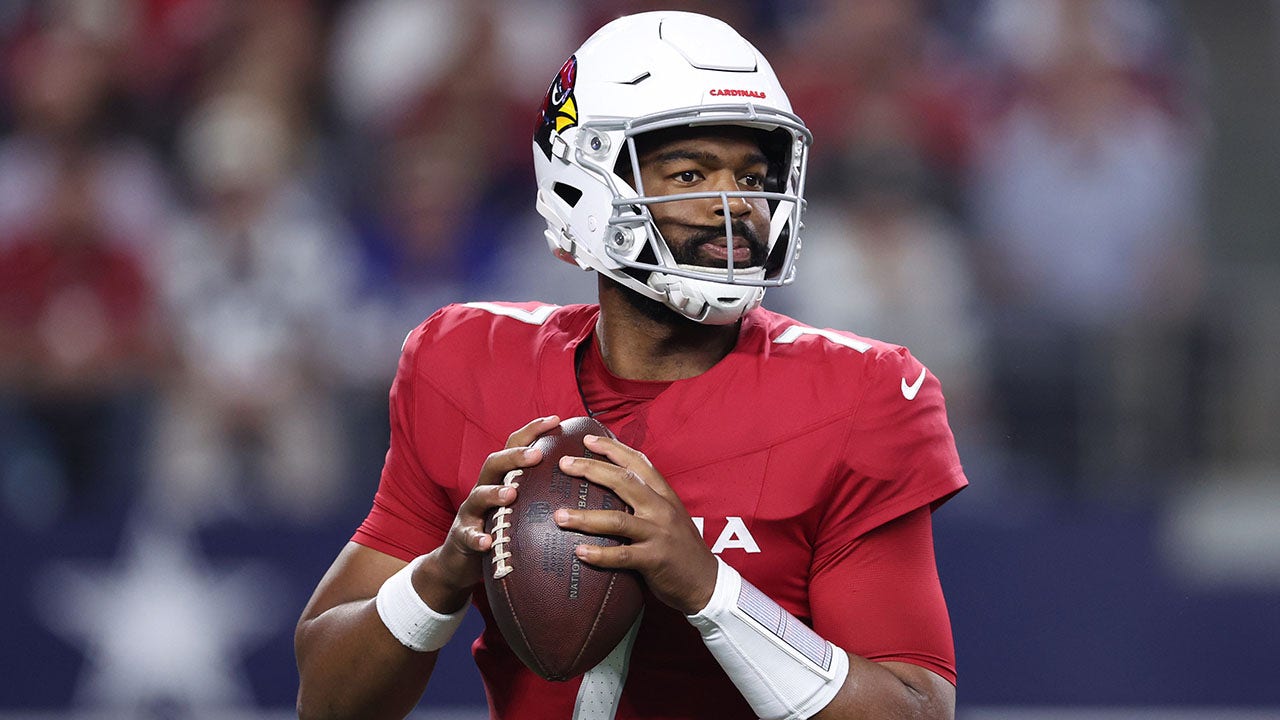
NEWYou can now listen to Fox News articles!
The Arizona Cardinals have finally snapped their five-game losing streak, doing so in convincing fashion with a 27-17 victory over the Dallas Cowboys.
The Cardinals, who started 2-0, are now 3-5, while the Cowboys – blown out by the Denver Broncos last week – fell to 3-5-1 heading into their bye week.
All eyes were on the Cowboys entering this game after that brutal loss at Mile High, but the Cardinals also came into this game desperately needing a win to not only get the vibes high in the locker room again but keep the season afloat.
It was Jacoby Brissett once again starting for Arizona, as Kyler Murray remains out with his toe injury. Brissett, though, was the man for the job from the jump, and Marvin Harrison Jr. was his right-hand man.
Marvin Harrison Jr. of the Arizona Cardinals celebrates his touchdown with Elijah Higgins against the Dallas Cowboys during the second quarter in the game at AT&T Stadium on Nov. 3, 2025 in Arlington, Texas. (Stacy Revere/Getty Images)
The second-year receiver had a fantastic night, tallying seven catches and 96 yards in the first half with the game’s first touchdown on a beautiful release that left cornerback Da’Ron Bland flat-footed.
However, Dak Prescott and the Cowboys’ offense – averaging over 30 points per game this season – couldn’t find a rhythm against the Cardinals’ defense. They turned it over on downs on their opening drive and came away empty-handed.
After a Cowboys punt, Harrison’s touchdown made it 10-0, and tight end Jake Ferguson’s fumble in Arizona territory killed another promising Dallas drive. But the Cowboys’ special teams answered when Sam Williams blocked a punt that ricocheted off his helmet and rolled into the end zone, where Marshawn Kneeland recovered it for a touchdown.
TONY ROMO’S AWKWARD NOISES DURING NFL BROADCAST DRAWS CRITICISM
Brissett and the Cardinals responded immediately, marching 74 yards in 11 plays before Brissett snuck one across at the goal line.
When the third quarter began, Michael Wilson immediately put the Cardinals in plus territory as he caught a ball from Brissett and ran 50 yards to Dallas’ 24-yard line. A few plays later, tight end Trey McBride made it 24-7 with a nice snag on the right side of the colored paint.

Jacoby Brissett of the Arizona Cardinals on the line of scrimmage against the Dallas Cowboys during the second quarter in the game at AT&T Stadium on Nov. 3, 2025 in Arlington, Texas. (Stacy Revere/Getty Images)
Dallas added a field goal, then Prescott connected with Ryan Flournoy for a short touchdown to cut the deficit to 10. Given how Arizona’s recent losses came down to one score, this one still felt far from over.
Dallas got another stop on defense, but it was the Cardinals’ defense that came away with a massive play during the ensuing drive. Prescott was blitzed and threw the ball immediately to running back Javonte Williams, who wasn’t ready for a Cardinals defender to hit him right away. During the tackle, the ball was ripped out of Williams’ arm and Akeem David-Gaither recovered it before it went out of bounds.
That play came with 4:46 left in the game, and just when it seemed like there was a chance for another epic collapse, Arizona finally came through with the play they needed.
In the box score, Brissett was 21-of-31 for 261 yards with two touchdown passes despite getting sacked five times by the Cowboys. McBride finished with five catches for 55 yards, while Emari Demercado led the way on the ground with 79 yards on 14 carries.

Jacoby Brissett of the Arizona Cardinals throws against the Dallas Cowboys during the first quarter in the game at AT&T Stadium on Nov. 03, 2025 in Arlington, Texas. (Sam Hodde/Getty Images)
For Dallas, Javonte Williams totaled 83 yards on 15 carries, but turnovers doomed the offense. Prescott went 24-for-39 for 250 yards with one touchdown and one interception, the latter coming on the Cowboys’ final drive.
CeeDee Lamb finished with 85 yards on seven catches, while George Pickens added six receptions for 79 yards.
Follow Fox News Digital’s sports coverage on X and subscribe to the Fox News Sports Huddle newsletter.
Sports
High school girls’ tennis: City Section playoff results

CITY SECTION PLAYOFFS
MONDAY’S RESULTS
Semifinals
DIVISION I
#5 GALA 21.5, #1 LA Marshall 8
#3 North Hollywood 15.5, #2 Chatsworth 14
DIVISION II
#1 Granada Hills Kennedy 17.5, #4 Bell 10
#2 Carson 20.5, Gardena 9
Note: Division II Finals Nov. 5 at 11 a.m. at Balboa Sports Center; Division I Finals Nov. 6 at 11 a.m. at Balboa Sports Center.
Sports
Women’s pro soccer player faces teammates’ rebuke after calling on league to adopt clear gender standards

NEWYou can now listen to Fox News articles!
A National Women’s Soccer League club has grown divided after one of its players called on the league to “adopt gender standards” to protect the integrity of the organization and grow the sport.
Elizabeth Eddy’s column appeared in the New York Post last week and she asked, “How do we preserve women’s rights and competitive fairness while fostering meaningful inclusion?”
Angel City FC defender Elizabeth Eddy (44) during the second half against Bay FC at PayPal Park on July 26, 2024. (Darren Yamashita/USA TODAY Sports)
Eddy wrote that controversies in swimming and track and field have shed light that women’s professional soccer lacks standards when it comes to intersex and transgender athletes. She wrote that the NWSL “must adopt a clear standard,” adding that only players born with ovaries should be allowed to play, following the standard in the Women’s Super League in the United Kingdom, or the league should adopt an SRY gene test, like World Athletics and World Boxing.
“Fairness and inclusion are core American values. Reasonable people can disagree about where to draw lines, but avoiding the conversation altogether by shutting out diverse views does not serve us. In fact, we owe it to current and future female athletes to solve this,” the 11-year veteran wrote.
But Eddy’s column didn’t sit well with her own teammates.
Sarah Gorden and Angelina Anderson both offered a scathing rebuke of Eddy.
US OLYMPIAN OPENS UP ON LEADING LAWSUIT AGAINST GOVERNING BODY OVER TRANS ATHLETES IN WOMEN’S COMPETITION

Angel City FC defender Sarah Gorden (11) kicks the ball against Chicago Stars during the first half of a match at SeatGeek Stadium on Nov. 2, 2025. (Melissa Tamez/Imagn Images)
“That article does not speak for this team in this locker room. I’ve had a lot of (conversations) with my teammates in the past few days and they are hurt and they are harmed by the article, and also, they are disgusted by some of the things that were said in the article and it’s really important for me to say that,” Gorden said on Friday.
“We don’t agree with the things written for a plethora of reasons, but mostly the undertones come across as transphobic and racist as well. The article calls for genetic testing on certain players and it has a photo of an African player as a headline. That’s very harmful, and to me, it’s inherently racist because to single out this community based on them looking or being different is absolutely a problem. As a mixed woman, with a Black family, I’m devastated by the undertones of this article.
Anderson talked about what she believed the club stood for.
“For me personally when I think of LA, and I think of Angel City, I think of a place that was founded upon inclusivity and love for all people – that’s what our locker room is, that what our staff is, that’s what our fan base is. Angel City is a place for everyone. It always will be. That’s how it was from the beginning, that’s how it will always be. Period,” she said.

Angel City FC goalkeeper Angelina Anderson (19) watches the play during the first half against Racing Louisville FC at Lynn Family Stadium on Sept. 27, 2025. (EM Dash/Imagn Images)
CLICK HERE TO DOWNLOAD THE FOX NEWS APP
“I think this situation, there’s an element of timing to it where this feels like another really big challenge that we have to go through as a team on top of an already really challenging year. And it’s definitely not the note that we as a group want to end on, and so I just want everyone to know that we’re doing our best in the locker room to preserve respect and belonging on this team and we look forward to ending the season on as positive of a note as possible.”
The NWSL reacted to Eddy’s column, too. The league told The Athletic it was “committed to working directly with the NWSL Players Association on any changes to our league policies.”
Follow Fox News Digital’s sports coverage on X and subscribe to the Fox News Sports Huddle newsletter.
-

 Milwaukee, WI6 days ago
Milwaukee, WI6 days agoLongtime anchor Shannon Sims is leaving Milwaukee’s WTMJ-TV (Channel 4)
-

 News1 week ago
News1 week agoWith food stamps set to dry up Nov. 1, SNAP recipients say they fear what’s next
-

 Alabama1 week ago
Alabama1 week agoHow did former Alabama basketball star Mark Sears do in NBA debut with Milwaukee Bucks?
-

 News1 week ago
News1 week ago1 dead, 6 injured in shooting at Lincoln University homecoming festivities
-

 Austin, TX1 week ago
Austin, TX1 week agoDia De Los Muertos Austin: Parades, Altars & Events
-

 Culture1 week ago
Culture1 week agoVideo: Tyler Mitchell Breaks Down Three Photos From His New Book
-

 Culture5 days ago
Culture5 days agoVideo: Dissecting Three Stephen King Adaptations
-

 Seattle, WA6 days ago
Seattle, WA6 days agoFOX 13’s Aaron Levine wins back-to-back Jeopardy! episodes


